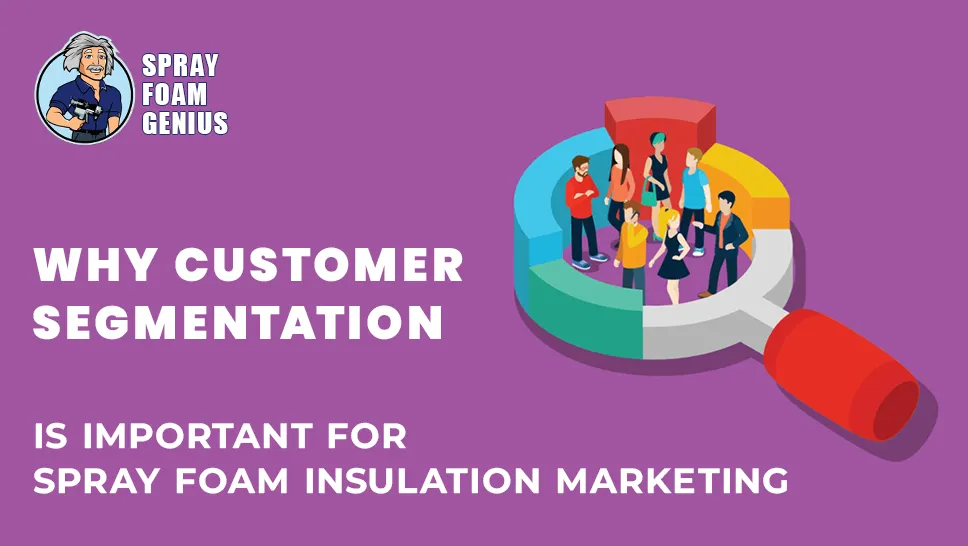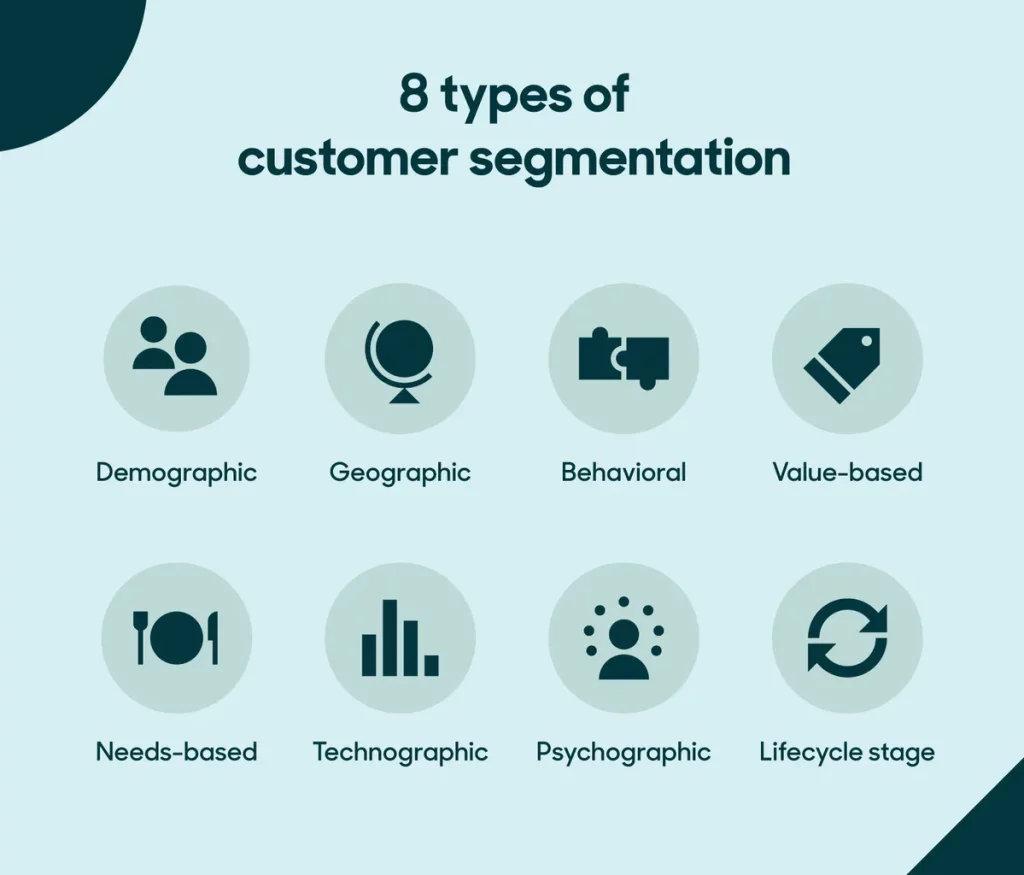
In today’s competitive market, spray foam insulation contractors need to leverage every tool at their disposal to stand out and attract the right clients. Customer segmentation is a powerful strategy that can dramatically improve your marketing efforts. This detailed guide explores the importance of customer segmentation in spray foam insulation marketing, offering insights on how it can help you better target your audience, enhance engagement, and optimize your marketing resources.
What is Customer Segmentation?
Customer segmentation involves dividing your customer base into distinct groups based on various criteria such as demographics, behaviors, and needs. This approach allows businesses to tailor their marketing strategies to address the specific characteristics and preferences of each segment. For spray foam insulation contractors, customer segmentation is not just a theoretical concept but a practical strategy that can lead to more effective marketing and improved business outcomes.
Key Segmentation Criteria
- Demographics: Characteristics such as age, gender, income, and occupation.
- Geographic Location: Regional factors influencing customer needs and preferences.
- Behavioral Data: Purchasing habits, brand loyalty, and product usage.
- Psychographic Factors: Lifestyles, values, and interests.
Why Customer Segmentation Matters for Spray Foam Insulation Contractors

1. Enhanced Targeting
Effective marketing begins with understanding your audience. Customer segmentation allows you to pinpoint the unique needs and pain points of different groups within your market. For instance, residential customers might prioritize energy savings and comfort, while commercial clients may be more focused on durability and cost-effectiveness. By tailoring your marketing messages to these specific needs, you can ensure that your communication is both relevant and compelling.
Examples of Targeted Messaging
- Residential Clients: Highlight energy efficiency and home comfort.
- Commercial Clients: Emphasize cost savings and long-term durability.
2. Improved Customer Engagement
Understanding your customers’ preferences enables you to engage with them in a more meaningful way. Personalized marketing efforts, such as targeted email campaigns or customized social media ads, are more likely to capture attention and drive action. Personalized engagement often leads to higher engagement rates, increased brand loyalty, and ultimately, more conversions.
Strategies for Personalized Engagement
- Email Campaigns: Use personalized subject lines and content tailored to specific segments.
- Social Media Ads: Create ads that address the unique needs and interests of each segment.
3. More Efficient Resource Allocation
Marketing resources are often limited, so it’s crucial to use them wisely. Customer segmentation helps you focus your marketing efforts on the segments with the highest potential for conversion. By directing your resources where they are most likely to yield results, you can maximize your return on investment (ROI).
Allocating Resources Effectively
- High-Potential Segments: Invest more in marketing strategies aimed at segments with high conversion potential.
- Performance Tracking: Monitor which segments yield the best results and adjust resource allocation accordingly.
4. Better Product and Service Customization
Understanding the unique needs of different customer segments allows you to tailor your products and services to meet those needs. For example, if you identify a segment that values eco-friendly solutions, you can emphasize your environmentally friendly spray foam insulation options. This level of customization not only meets customer expectations but also sets you apart from your competitors.
Customization Examples
- Eco-Friendly Products: Highlight the environmental benefits of your spray foam insulation for eco-conscious customers.
- Specialized Solutions: Offer tailored solutions for unique commercial applications.
Implementing Customer Segmentation in Your Marketing Strategy
1. Collect and Analyze Data
The first step in implementing customer segmentation is to gather relevant data. This data can come from various sources, including customer surveys, sales data, and website analytics. Analyzing this data will help you identify key customer segments and their specific needs.
Data Collection Methods
- Surveys: Gather feedback directly from your customers.
- Sales Data: Analyze purchasing patterns and trends.
- Website Analytics: Track user behavior on your website.
2. Develop Targeted Marketing Campaigns
Once you’ve identified your customer segments, create marketing campaigns tailored to each group. This might involve developing personalized email messages, designing targeted social media ads, or creating content that addresses the unique needs of each segment.
Campaign Development Tips
- Personalized Emails: Craft messages that speak directly to the needs of each segment.
- Segment-Specific Ads: Design ads that address the unique pain points and interests of different customer groups.
3. Monitor and Adjust Your Strategies
Customer segmentation is an ongoing process. Continuously monitor the performance of your marketing campaigns and make adjustments based on the results. This ensures that your marketing efforts remain relevant and effective over time.
Monitoring and Adjustment Techniques
- Performance Metrics: Track key performance indicators (KPIs) for each campaign.
- Feedback Loops: Gather feedback from customers to refine your segmentation and marketing strategies.
4. Leverage Technology
Utilize customer relationship management (CRM) tools and marketing automation software to streamline your segmentation efforts. These tools can help you manage and analyze customer data, create targeted campaigns, and track results more efficiently.
Recommended Technologies
- CRM Systems: Manage customer data and interactions.
- Marketing Automation: Automate and personalize your marketing campaigns.
The Benefits of Customer Segmentation for Spray Foam Insulation Contractors
1. Increased Conversion Rates
By focusing your marketing efforts on specific customer segments, you’re more likely to reach individuals who are genuinely interested in your services. This targeted approach can lead to higher conversion rates and a better return on investment.
How Targeting Boosts Conversions
- Relevant Messaging: Tailor your messages to address the specific needs of each segment.
- Higher Engagement: Engage with customers who are more likely to convert.
2. Enhanced Customer Satisfaction
Personalized marketing efforts that address the specific needs and preferences of your customers can lead to higher satisfaction levels. Satisfied customers are more likely to become repeat clients and refer your services to others.
Improving Customer Satisfaction
- Customized Solutions: Offer solutions that meet the unique needs of each customer segment.
- Responsive Service: Provide excellent customer service tailored to the preferences of different segments.
3. Stronger Competitive Advantage
In a competitive market, differentiation is key. Customer segmentation allows you to stand out by offering tailored solutions that meet the unique needs of different segments. This can give you a significant edge over competitors who use a one-size-fits-all approach.
Gaining a Competitive Edge
- Unique Value Proposition: Develop a value proposition that resonates with each customer segment.
- Differentiation: Highlight what sets your services apart from the competition.
4. Optimized Marketing Spend
Effective customer segmentation helps you allocate your marketing budget more efficiently. By focusing your efforts on the most promising segments, you can reduce waste and ensure that your marketing spend is directed towards initiatives that deliver the best results.
Budget Optimization Strategies
- Segment Analysis: Identify the segments that offer the best ROI.
- Cost-Effective Campaigns: Invest in marketing strategies that provide the highest return.
Maximize Your Marketing Potential
Customer segmentation is a vital tool for spray foam insulation contractors looking to enhance their marketing strategies and drive business growth. By understanding and targeting specific customer groups, you can create more relevant and effective marketing campaigns, improve customer engagement, and achieve better results.
Ready to take your marketing to the next level? Reach out to us today. At Spray Foam Genius Marketing, we specialize in providing tailored SEO, Google My Business optimization, website development, lead generation, social media marketing, and reputation management services specifically for spray foam insulation contractors.
Call us at 877-840-FOAM for USA and 844-741-FOAM for Canada visit our website at sprayfoamgeniusmarketing.com, or email us at [email protected] to learn how we can help you achieve your business goals!
- Social Media Marketing for Spray Foam Businesses: What Works in 2025? - February 6, 2025
- Best SEO Strategies for Spray Foam Insulation Contractors to Rank #1 on Google - February 6, 2025
- What is Spray Foam Insulation? Benefits and Applications - February 5, 2025

